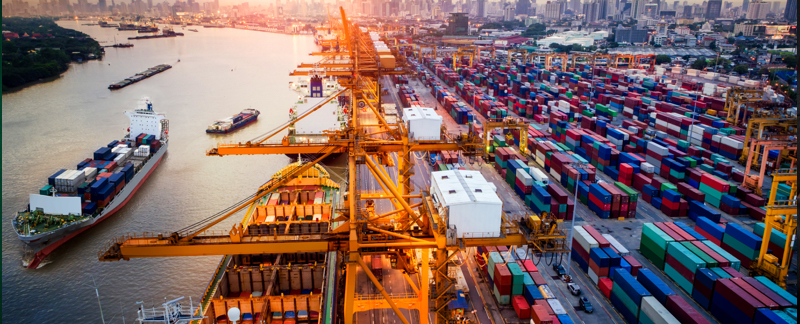
Business in the Time of COVID-19
Can you inoculate your supply chain against adverse disruption?
The cat is out of the bag. One way or another, the novel coronavirus outbreak will impact your business, if it hasn’t already done so. The extent of the impact, as well as its timing, will largely hinge on two factors. The first is your place in the supply chain. That includes how upstream or downstream you operate in the value chain as well the geographic proximity of your supply network to the disrupting event. In other words, where you locate your supply sources, transportation routes, warehouses, factories and distribution centers will make a difference. The second factor is the quality of your business continuity planning, or in lay terms, your preparedness to deal with adversity. A comprehensive set of contingencies will help you minimize negative repercussions on your business as well as provide a foundation for swiftly bouncing back to business as usual.
Your Place in The Supply Chain
At its most basic level, a supply chain is like any other chain. Think of it as a collection of connected links that act as a rope bridge along which products, services, money and information flow in either direction. Each link represents a business on the chain whose role is to hold together suppliers and customers on either side. The complexity of a supply chain varies to the extent that it takes to bring products and services to the consumer all the way from the earth (farm, mine, ocean, etc.) A product could theoretically travel across a dozen or more links as it evolves from raw material to its finished form in the hands of the consumer.
A key feature of this rig is that it is prone to breaking at the weakest link when enough strain is applied by a disrupting event, such as an earthquake, a recession or indeed a viral outbreak. Once a link breaks, the repercussions are felt across the chain at varying intensities and times, not unlike the ripple effect created by throwing a stone in a pond. The closer you are to the place of impact, the harder and faster you would feel it. Case in point, consider an interruption of iron ore production at a mine. A steel mill that is supplied by said mine will be impacted almost immediately. In turn, the steel supplied by the mill to a car component manufacturer might feel it a few weeks down the line, and it could be months before the car manufacturer and the car dealership are impacted.
Business Continuity Planning
While all parties on the chain will feel the bite of a disruptive event, several measures can be taken to minimize the negative repercussions and to expedite the recovery. These measures require investments in four areas: redundancy, resourcefulness, robustness and reputation. Done right, the investments will boost an operation’s immunity against disruption and set it up for a quick recovery.
Redundancy
Redundancy is the excess capacity that an organization strategically chooses to keep. It can take the form of safety stocks, underutilized assets or surplus manpower. Supply chain redundancy is extremely effective in that it allows any link on the chain to rely on itself for a finite period to bridge interruptions in supply. While easy to attain, redundancies can be inefficient. Capacity that is not utilized yields a cost, but no revenues. As such, businesses must be smart at identifying the vital areas of operations where holding redundancies would make strategic sense.
Resourcefulness
A resourceful operation is one that is flexible and capable of adapting to changing circumstances. Rather than the chain breaking at the weakest link, think of it as twisting and turning as it adapts to the changing winds. Flexibility is much cheaper to achieve than redundancy but requires a degree of sophistication in network design and strategic thinking.
Flexibility can be achieved using different tactics. The first is the adoption of standardized processes across products and geographic locations. This makes it easier to overcome disruption as the flow of supply is channeled through alternative routes. For example, when a steel mill’s supply of a certain iron ore spec can no longer be supplied by We“R”Ore, it can just as easily accommodate Ore-Gallore for its sourcing needs. A second tactic is to connect the links of the chain in parallel, rather than in series. In this manner, a broken link won’t cause the whole chain to collapse as it is supported on multiple points. Designing products for maximum postponement can achieve further flexibility as your finishing touches to your product are not made until the product is ready to be shipped. Any changes in the form of demand before that can still be catered to. Finally, maintaining multiple transportation modes and routes ensures you could still get to the other side even if that bridge collapses.
Robustness
Robustness is achieved by strengthening the core primarily through the ability to improve information flow across the supply chain. Many organizations lack visibility beyond their immediate partners on either side of the chain. We may know about the challenges and disruptions our suppliers are facing, but what about those faced by our supplier’s supplier, or our supplier’s supplier’s supplier? The further out we can see down the chain, the better we are at immunizing against threats to our supply lines. Strengthening the core can be further reinforced by investing in the ability of our people and algorithms to identify problems at an early stage and by improving preparedness for dealing with crises.
Reputation
While redundancy, flexibility and robustness serve to limit the impact of adversity, it is our reputation that is going to help us bounce back once the disrupting force is behind us. Banks, investors, suppliers and customers are more likely to help us back to our feet when our brand carries goodwill. This is achieved by building a brand name, investing in growing relationships with partners and fostering a culture of collaboration and innovation.
Disruption brought about by events such as COVID-19 can cause a business to fall ill. While the source of a disruption may be completely out of our hands, there remains a lot that is under our control to deal with the repercussions. Ultimately, it is the quality of a business continuity plan and leadership’s ability to orchestrate its implementation effectively that will give a firm its staying power.
Related Articles

PART 3: Supply Chains are Suffering from Long COVID. This is what they’ll recover to look like
Supply chains, too, have escaped with their lives, having contracted Long…

PART 2: Supply Chains are Suffering from Long COVID. Here’s the Vaccine
Global supply chains are still suffering from Long COVID two years after…

Supply Chains Are Suffering from “Long COVID”. Here’s Why and What to Expect Next
Two years after the onset of the COVID-19 pandemic, the world still reels…

No Cheese, Please! Balancing Flexibility and Efficiency in Supply Chains
Don’t get me wrong, I love Thai food. But having spent the best part of…
